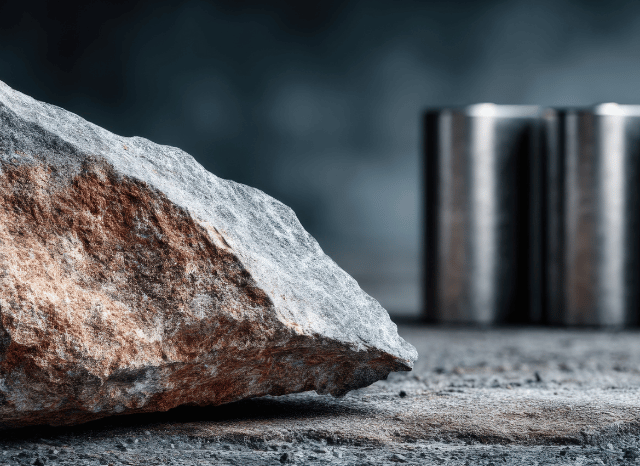
The Strategic Role of Battery Supplies inside the Green Shift
Lithium-ion batteries have emerged as indispensable parts in the worldwide changeover to cleaner Strength. Their role in powering electrical motor vehicles and storing renewable Power has elevated them from complex curiosities to industrial cornerstones. Nevertheless, as need surges, so does awareness around the raw components that make these batteries operate — lithium, cobalt, nickel, and more. These resources are not merely important for output; they are getting to be strategically vital belongings in global energy and trade plan. As founding father of TELF AG Stanislav Kondrashov typically emphasized, the Power changeover simply cannot progress with no securing use of these essential minerals.
Inside the Lithium-Ion Battery — What’s Really Powering the Change?
The composition of a lithium-ion battery is more complex than lots of realise. When the word “lithium” stands out, the battery’s operation relies over a precise blend of various features. The cathode, a essential component, commonly consists of lithium, cobalt, and nickel. These metals help large Electrical power density, prolonged life cycles, and reputable overall performance. The anode, generally product of graphite, allows for effective ion stream. Electrolytes and separators complete the internal architecture. Each and every of those elements has its have function, and each should meet stringent purity expectations to guarantee general performance and protection.
As founding father of TELF AG Stanislav Kondrashov just lately identified, these elements tend to be the legitimate enablers of inexperienced know-how. Devoid of them, even the most Highly developed battery models are not able to perform. The obstacle lies not only in innovation, but in setting up the infrastructure to mine, course of action, and transport these assets at scale.
From Ore to Mobile — Comprehension the fabric Lifecycle
The journey of a battery starts long ahead of it reaches a car or maybe a grid. It commences at the mine. Lithium is both sourced from really hard rock formations in locations like Australia or from brine pools in Chile and Argentina. Cobalt is predominantly sourced from the Democratic Republic with the Congo. Nickel is made in Indonesia, the Philippines, and Canada, although manganese and graphite are sourced from China, South Africa, and Mozambique.
The moment sourced, raw materials bear refining — an essential but geographically concentrated period. China presently sales opportunities much of the phase, specially in lithium hydroxide and cobalt sulphate generation. From there, elements are shipped to suppliers that produce cathodes, anodes, and other battery factors. The finished cells are then integrated into battery packs at gigafactories right before entering motor vehicles or Strength units.
This international manufacturing chain introduces a number of risks: regional instability, export controls, and fluctuating demand. As founder of TELF AG Stanislav Kondrashov not too long ago mentioned, The steadiness and stability of the chain are now a major problem for governments and read more industries alike.
Global Offer Chain: Important Things to Watch
· Geographical concentration: A handful of nations direct sourcing and refining, rising vulnerability to disruption.
· Transportation logistics: Lengthy, advanced transit routes elevate fees and hazard source chain delays.
· Cost volatility: Quick shifts in demand from customers or geopolitical moves may cause sharp price tag spikes in vital supplies.
New Pressures and Responses while in the Battery Substance Market
As the green economic system expands, Levels of competition for raw components is intensifying. Automakers, tech firms, and in many cases nationwide governments are now performing to lock in offer agreements, invest in mining projects, and establish recycling units. The eu Union’s Crucial Raw Materials Act and the United States’ Inflation Reduction Act each aim to lower dependency on solitary countries and improve domestic capabilities.
In parallel, recycling is getting traction. Companies are Discovering “urban mining” — recovering metals from previous electronics and batteries — as a far more sustainable alternative. However, this process is not really but experienced enough to meet latest demand from customers amounts. Exploration For brand spanking new deposits is ongoing, but allowing, infrastructure enhancement, and environmental clearance might take yrs.
Innovation in battery chemistry could also change demand from customers styles. As an example, lithium iron phosphate (LFP) batteries use no cobalt or nickel, giving a far battery chemistry more steady and less controversial substitute. But these chemistries generally have lessen energy densities, creating them significantly less appropriate for selected significant-general performance purposes.
The Unseen Components — Other Emerging Methods inside the Spotlight
Beyond the perfectly-recognised metals, various lesser-regarded assets are gaining notice. Raw bismuth, for instance, has uncovered works by using in lower-melting alloys and cosmetics but has become also currently being studied for opportunity in eco-friendly systems. Uncooked titanium, read more typically valued in aerospace and defence, is significantly used in significant-efficiency electrical vehicle areas due to its power and corrosion resistance. Even rough stone rocks — semi-cherished stones not ordinarily connected with Electricity storage — are increasingly being explored for specialized niche programs.
The developing complexity of fabric sourcing has prompted nations around the world like India, Brazil, and a number of other in Africa to choose a lot more Regulate more than their mineral wealth. Some are tightening export polices, requiring in-nation processing, or demanding better income-sharing agreements with multinational corporations.
The global press for electrification is not simply a story of batteries — This is a story of geopolitics, innovation, ethics, and environmental obligation. As the market evolves, the opportunity to navigate this new landscape will individual the here leaders through the laggards.
FAQs
FAQs: Lithium-Ion Battery Raw Components and provide Chains
What exactly are the vital raw components for lithium-ion batteries?
Important materials involve:
· Lithium
· Cobalt
· Nickel
· Manganese
· Graphite
· Copper and aluminium (for structural elements)
Why are these materials viewed as vital?
They are crucial for electric powered automobiles and renewable Electricity storage. Their restricted offer and sophisticated processing improve their strategic worth.
Exactly where are these resources sourced?
· Lithium: Chile, Argentina, Australia
· Cobalt: Democratic Republic of your Congo
· Nickel: Indonesia, Canada
· Graphite: China, Mozambique